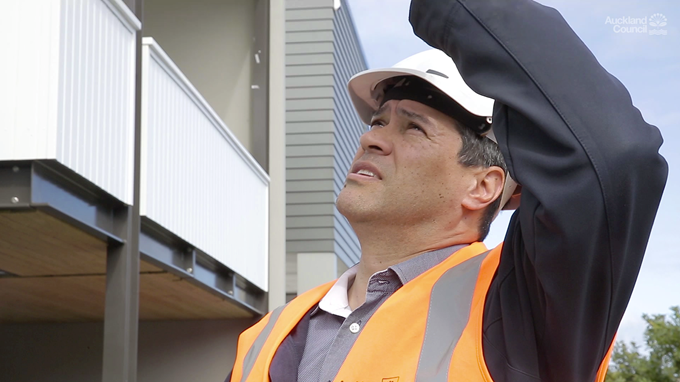As the Auckland building boom gains momentum, traditional building materials are becoming harder to find when they’re needed, causing builders to turn to substitute products to get the work done faster.
In many but not all cases, that can also mean better, provided the new products are 'up to code'.
Ian McCormick, General Manager of Auckland Council’s Building Control team, says council building inspectors are seeing more substitutions than ever before, with a cheaper price being the number one reason for replacing the specified product.
He’s urging builders to save themselves and their customers thousands of dollars by getting the proper sign-offs before using substitutes.
“We’re seeing innovative new products and processes entering the market. That’s great news because it improves the whole industry.
"But Auckland Council has a duty of care to Aucklanders to make sure those products meet our high standards and are fit for the intended use for the lifetime of the building.”
Mr McCormick says it’s common for inspectors to discover a substitution on-site during an inspection.
“That may happen weeks after the decision to use the alternative product was made. The message is clear – notify us as early as possible to avoid delays in building.”
All building products must meet the New Zealand Building Code.
The sticking point for builders in a hurry is in the time it takes for the council to assess the products as fit for purpose, but Ian McCormick argues for “less haste, less waste.”
“While we recognise builders need to get on with their construction, we can’t cut corners on quality, durability and suitability.”
Ian says due diligence can sometimes look like red tape when you’re in a hurry, but reputable builders recognise the importance of ensuring new products are up to code. He cautions against falling for a cheap price and quick turnaround if the deal looks too good to be true.
“While there are some great new products on the market, the boom has attracted a few cowboys trying to cut corners and some importers trying to bring in cheap, substandard products,” he says.
Mr McCormick says that good building practice is a bit like the proverbial tortoise and hare.
“Sometimes it may seem to take a bit longer, but getting new building products signed off is cheaper and faster than having to re-work non-compliant construction – and in the end Auckland consumers get reliable and sustainable buildings.”
Helpful checklist for homeowners
- Ask the designer or builder to provide confirmation that the product complies.
- Ask for the supplier for confirmation that the product meets the Building Code. The Building Act requires the supplier or manufacturer to confirm that products if installed as per their instructions will comply with the Building Code. They normally do this by quoting a New Zealand standard used to meet specific testing requirements or, if an international standard is used, they will need to demonstrate its alignment with the equivalent New Zealand standard.
- Check to see if the product has been independently appraised or certified in New Zealand. An example of this is the Building Research Association of NZ (BRANZ) appraisal website where they list products which have been tested and certify compliance with the NZ Building Code.
- Ask the building inspector. They will provide advice on compliance matters.
- You should check compliance before buying particularly if the product price seems too good to be true.
The council's Building Control team ensures safe sustainable buildings for Aucklanders and makes it easier to build compliant developments in the Auckland region.
It offers free help with consent applications.
The team also publishes a free guide to working with Auckland Council while building or renovating your home.


